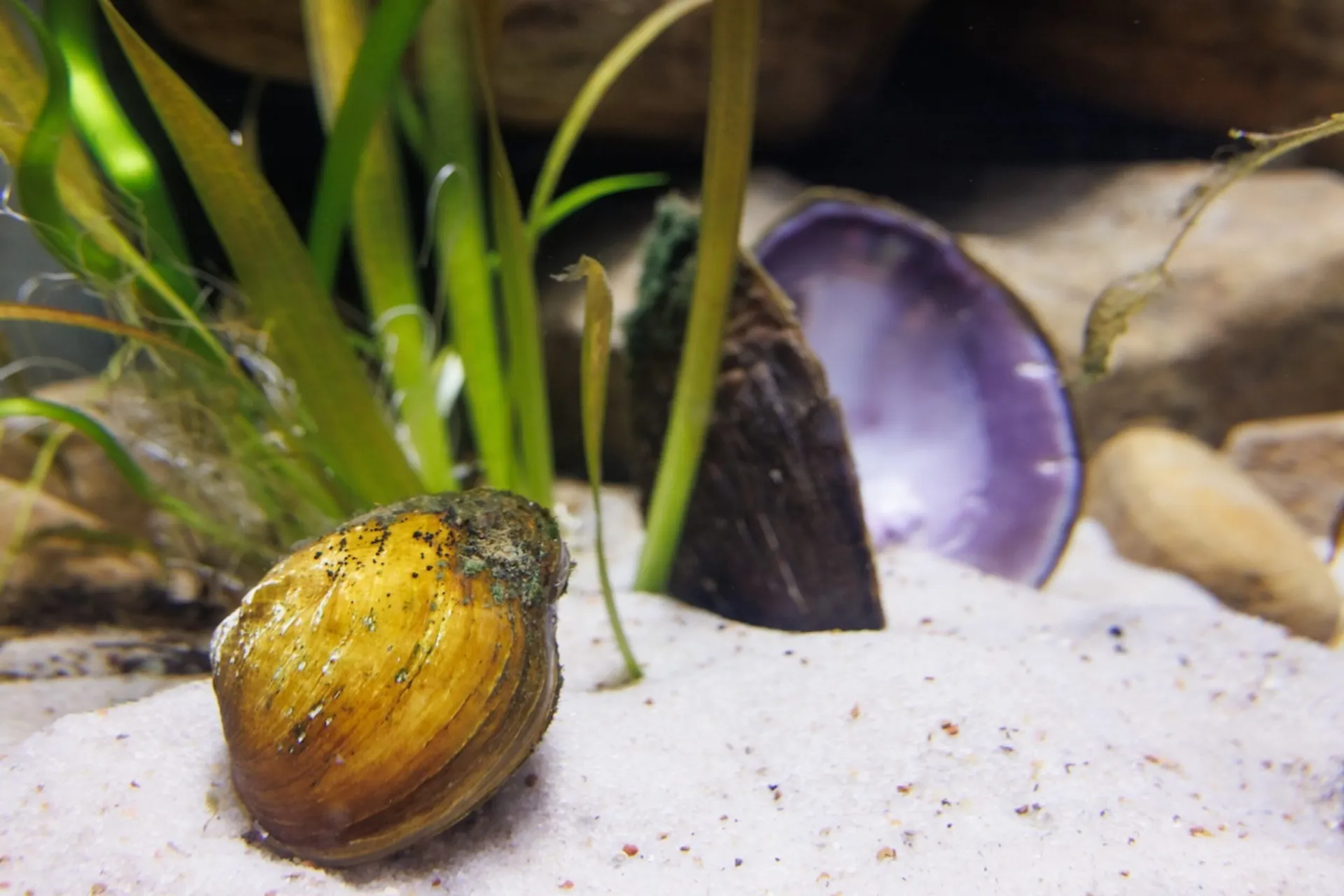Chattanooga, Tenn. (April 9, 2025) – Orangefoot Pimpleback. Monkeyface. Fuzzy Pigtoe.
No, these aren’t insults hurled by kindergarteners on the playground; they’re freshwater mussel species. Despite their playful monikers, these rock-like animals play a serious role in improving water quality in rivers and streams.
A new exhibit in the Tennessee Aquarium’s Ridges to Rivers gallery showcases these often-underappreciated organisms and draws attention to their role in maintaining the health of aquatic ecosystems.
“We live in the most biodiverse area for freshwater mussels in the world here in the Tennessee River Valley,” says Senior Aquarist Avery Millard, who is responsible for the care of exhibits in Ridges to Rivers.
Flowing just west of Chattanooga, the Duck River is one of the most life-rich waterways in all of North America. This 284-mile river — the longest contained entirely within the Volunteer State — also is especially abundant in mussel species. A trio of Duck River mussels are featured in the new exhibit: Purple Wartyback, Threehorn Wartyback and Painted Creekshell.
“I’m from Kansas, and within the whole state, there are only around 50 mussel species,” says Conservation Manager Stephanie Chance. “We could easily find 50 species in a day on the Duck River.”
Mussels are mollusks with two connected shells protecting a soft internal body. They lack eyes, ears, or a head but do possess gills and a single foot, with which they can move or burrow into the river bottom.
Palm- or hand-sized and resembling rocks nestled at the bottoms of waterways, freshwater mussels are easy to miss among flashier aquatic life. Despite their unassuming appearance, however, they are of vital importance to water quality.
Mussels sit along the bottom of the river with their shells peeking out of the sand and gravel. There, they suck up water and filter out nutrients, bacteria, algae, sediment, and small amounts of used oil and other pollutants before expelling the cleansed water back into the flow.
Multiply this action by tens of thousands of mussels, and you have a living filtration system capable of cleaning colossal volumes of water.
“They’re the lifeblood of a river system,” Chance says. “It’s just like having your refrigerator filter or your water filter at home. Rivers naturally have their own filter, and that is freshwater mussels.”
Unfortunately, freshwater mussels are among the most-endangered group of organisms in the United States, but steps are being taken to support them in Tennessee.
In 2024, Gov. Bill Lee signed an executive order to establish best management practices to ensure the Duck River watershed remains a haven for aquatic life and a safe resource for the approximately 250,000 Tennesseans who rely on it for their drinking water.
While freshwater mussels are mighty, their cleansing capabilities are limited. So, they need a lot of help from humans to keep silt and pollutants like used oil from entering waterways in the first place.
To help spread the word about the important role mussels play in aquatic environments, the Aquarium’s freshwater mussel exhibit is supported by funding from the Tennessee Department of Environment and Conservation (TDEC).
“As directed by Governor Lee’s Executive Order, TDEC is working to balance the protection of mussel habitat in the Duck River with the need to provide safe, reliable drinking water for residents. Tennesseans can help by promoting the importance of water conservation and participating in public education opportunities like this one at the Tennessee Aquarium,” said TDEC Commissioner David Salyers.
The new exhibit also demonstrates how mussels have been a culturally significant part of life in Tennessee for millennia.
“They’re a part of our history,” Millard says. “For as long as humans have inhabited this area, people have relied on mussels in one way or another. I’m sure even people today have stories of their parents or grandparents using mussels for various things throughout the years.”
To learn more about freshwater bivalves and the role they play in healthy waterways, listen to this mussel-centric episode of the Aquarium’s official podcast at tnaqua.org/riverwatch/podcast-a-galentines-day-shell-ebration-of-mussels/
